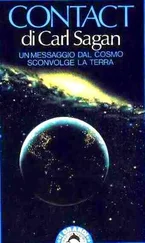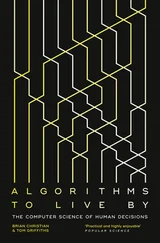Carl Sagan - Broca's Brain - The Romance of Science
Здесь есть возможность читать онлайн «Carl Sagan - Broca's Brain - The Romance of Science» весь текст электронной книги совершенно бесплатно (целиком полную версию без сокращений). В некоторых случаях можно слушать аудио, скачать через торрент в формате fb2 и присутствует краткое содержание. Жанр: Физика, на английском языке. Описание произведения, (предисловие) а так же отзывы посетителей доступны на портале библиотеки ЛибКат.
- Название:Broca's Brain: The Romance of Science
- Автор:
- Жанр:
- Год:неизвестен
- ISBN:нет данных
- Рейтинг книги:3 / 5. Голосов: 1
-
Избранное:Добавить в избранное
- Отзывы:
-
Ваша оценка:
- 60
- 1
- 2
- 3
- 4
- 5
Broca's Brain: The Romance of Science: краткое содержание, описание и аннотация
Предлагаем к чтению аннотацию, описание, краткое содержание или предисловие (зависит от того, что написал сам автор книги «Broca's Brain: The Romance of Science»). Если вы не нашли необходимую информацию о книге — напишите в комментариях, мы постараемся отыскать её.
Broca's Brain: The Romance of Science — читать онлайн бесплатно полную книгу (весь текст) целиком
Ниже представлен текст книги, разбитый по страницам. Система сохранения места последней прочитанной страницы, позволяет с удобством читать онлайн бесплатно книгу «Broca's Brain: The Romance of Science», без необходимости каждый раз заново искать на чём Вы остановились. Поставьте закладку, и сможете в любой момент перейти на страницу, на которой закончили чтение.
Интервал:
Закладка:
Huygens exemplified the synthesis of advancing technology, experimental skills, a reasonable, hard-nosed and skeptical mind, and an openness to new ideas. He was the first to suggest that we are looking at atmosphere and clouds on Venus; the first to understand something of the true nature of the rings of Saturn (which had seemed to Galileo as two “ears” enveloping the planet); the first to draw a picture of a recognizable marking on the Martian surface (Syrtis Major); and the second, after Robert Hooke, to draw the Great Red Spot of Jupiter. These last two observations are still of scientific importance because they establish the permanence at least for three centuries of these features. Huygens was of course not a thoroughly modern astronomer. He could not entirely escape the fashions of belief of his time. For example, he presented a curious argument from which we could deduce the presence of hemp on Jupiter: Galileo had observed that Jupiter has four moons. Huygens asked a question few modern planetary astronomers would ask: Why does Jupiter have four moons? An insight into this question, he thought, could be garnered by asking the same question of the Earth’s single moon, whose function, apart from giving a little light at night and raising the tides, was to provide a navigational aid to mariners. If Jupiter has four moons, there must be many mariners on that planet. But mariners imply boats; boats imply sails; sails imply ropes; and, I suppose, ropes imply hemp. I wonder how many of our present highly prized scientific arguments will seem equally suspect from the vantage point of three centuries.
A useful index of our knowledge about a planet is the number of bits of information necessary to characterize our understanding of its surface. We can think of this as the number of black and white dots in the equivalent of a newspaper wirephoto which, held at arm’s length, would summarize all existing imagery. Back in Huygens’ day, about ten bits of information, all obtained by brief glimpses through telescopes, would have covered our knowledge of the surface of Mars. By the time of the close approach of Mars to Earth in the year 1877, this number had risen to perhaps a few thousand, if we exclude a large amount of erroneous information-for example, drawings of the “canals,” which we now know to be entirely illusory. With further visual observations and the development of ground-based astronomical photography, the amount of information grew slowly until a dramatic upturn in the curve occurred, corresponding to the advent of space-vehicle exploration of the planet.
The twenty photographs obtained in 1965 by the Mariner 4 fly-by comprised five million bits of information, roughly comparable to all previous photographic knowledge about the planet. The coverage was still only a tiny fraction of the planet. The dual fly-by mission, Mariner 6 and 7 in 1969, increased this number by a factor of 100, and the Mariner 9 orbiter in 1971 and 1972 increased it by another factor of 100. The Mariner 9 photographic results from Mars correspond roughly to 10,000 times the total previous photographic knowledge of Mars obtained over the history of mankind. Comparable improvements apply to the infrared and ultraviolet spectroscopic data obtained by Mariner 9, compared with the best previous ground-based data.
Going hand in hand with the improvement in the quantity of our information is the spectacular improvement in its quality. Prior to Mariner 4, the smallest feature reliably detected on the surface of Mars was several hundred kilometers across. After Mariner 9, several percent of the planet had been viewed at an effective resolution of 100 meters, an improvement in resolution of a factor of 1,000 in the last ten years, and a factor of 10,000 since Huygens’ time. Still further improvements were provided by Viking. It is only because of this improvement in resolution that we today know of vast volcanoes, polar laminae, sinuous tributaried channels, great rift valleys, dune fields, crater-associated dust streaks, and many other features, instructive and mysterious, of the Martian environment.
Both resolution and coverage are required to understand a newly explored planet. For example, even with their superior resolution, by an unlucky coincidence the Mariner 4, 6 and 7 spacecraft observed the old, cratered and relatively uninteresting part of Mars and gave no hint of the young and geologically active third of the planet revealed by Mariner 9.
LIFE ON EARTH is wholly undetectable by orbital photography until about 100-meter resolution is achieved, at which point the urban and agricultural geometrizing of our technological civilization becomes strikingly evident. Had there been a civilization on Mars of comparable extent and level of development, it would not have been detected photographically until the Mariner 9 and Viking missions. There is no reason to expect such civilizations on the nearby planets, but the comparison strikingly illustrates that we are just beginning an adequate reconnaissance of neighboring worlds.
THERE IS NO question that astonishments and delights await us as both resolution and coverage are dramatically improved in photography, and comparable improvements are secured in spectroscopic and other methods.
The largest professional organization of planetary scientists in the world is the Division for Planetary Sciences of the American Astronomical Society. The vigor of this burgeoning science is apparent in the meetings of the society. In the 1975 annual meeting, for example, there were announcements of the discovery of water vapor in the atmosphere of Jupiter, ethane on Saturn, possible hydrocarbons on the asteroid Vesta, an atmospheric pressure approaching that of the Earth on the Saturnian moon Titan, decameter-wavelength radio bursts from Saturn, the radar detection of the Jovian moon Ganymede, the elaboration of the radio emission spectrum of the Jovian moon Callisto, to say nothing of the spectacular views of Mercury and Jupiter (and their magnetospheres) presented by the Mariner 10 and Pioneer 11 experiments. Comparable advances were reported in subsequent meetings.
In all the flurry and excitement of recent discoveries, no general view of the origin and evolution of the planets has yet emerged, but the subject is now very rich in provocative hints and clever surmises. It is becoming clear that the study of any planet illuminates our knowledge of the rest, and if we are to understand Earth thoroughly, we must have a comprehensive knowledge of the other planets. For example, one now fashionable suggestion, which I first proposed in 1960, is that the high temperatures on the surface of Venus are due to a runaway greenhouse effect in which water and carbon dioxide in a planetary atmosphere impede the emission of thermal infrared radiation from the surface to space; the surface temperature then rises to achieve equilibrium between the visible sunlight arriving at the surface and the infrared radiation leaving it; this higher surface temperature results in a higher vapor pressure of the greenhouse gases, carbon dioxide and water; and so on, until all the carbon dioxide and water vapor is in the vapor phase, producing a planet with high atmospheric pressure and high surface temperature.
Now, the reason that Venus has such an atmosphere and Earth does not seems to be a relatively small increment of sunlight. Were the Sun to grow brighter or Earth’s surface and clouds to grow darker, could Earth become a replica of the classical vision of Hell? Venus may be a cautionary tale for our technical civilization, which has the capability to alter profoundly the environment of Earth.
Despite the expectation of almost all planetary scientists, Mars turns out to be covered with thousands of sinuous tributaried channels probably several billion years old. Whether formed by running water or running CO 2, many such channels probably could not be carved under present atmospheric conditions; they require much higher pressures and probably higher polar temperatures. Thus the channels-as well as the polar laminated terrain on Mars-may bear witness to at least one, and perhaps many, previous epochs of much more clement conditions, implying major climatic variations during the history of the planet. We do not know if such variations are internally or externally caused. If internally, it will be of interest to see whether the Earth might, through the activities of man, experience a Martian degree of climatic excursions-something much greater than the Earth seems to have experienced at least recently. If the Martian climatic variations are externally produced-for example, by variations in solar luminosity-then a correlation of Martian and terrestrial paleoclimatology would appear extremely promising.
Читать дальшеИнтервал:
Закладка:
Похожие книги на «Broca's Brain: The Romance of Science»
Представляем Вашему вниманию похожие книги на «Broca's Brain: The Romance of Science» списком для выбора. Мы отобрали схожую по названию и смыслу литературу в надежде предоставить читателям больше вариантов отыскать новые, интересные, ещё непрочитанные произведения.
Обсуждение, отзывы о книге «Broca's Brain: The Romance of Science» и просто собственные мнения читателей. Оставьте ваши комментарии, напишите, что Вы думаете о произведении, его смысле или главных героях. Укажите что конкретно понравилось, а что нет, и почему Вы так считаете.











